Loss of Boeing B-17G Flying Fortress, Drem, 4th February 1944
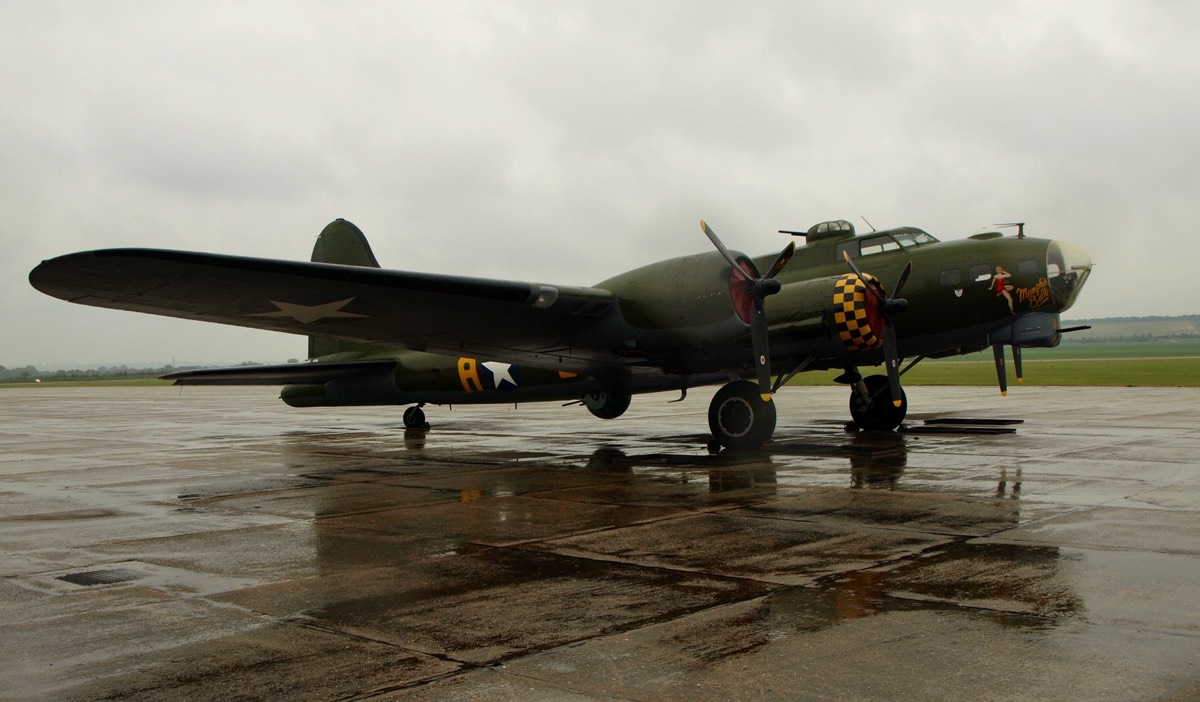
Memphis Belle replica, Duxford . This is a Boeing B-17F Flying Fortress and the only B-17 still flying in the UK.
[D. Haire]
This particular B-17 was built by Boeing in its plant in Seattle and delivered to Cheyenne on the 9th December 1943. It was ferried across the Atlantic, possibly via the Newfoundland, Greenland and Iceland route, to RAF Nutts Corner in Northern Ireland on the 15th January 1944. On the 29th January, it was assigned to the USAAF's 423rd Bomber Squadron at Thurleigh. This was an RAF base from 1941 to 1942 but then became one of the many bases of the US's 8th Air Force in England and the permanent home of the 423rd. It was situated just west of Cambridge.
Unlike the pictures of the Memphis Belle replica shown above, the B-17 involved in the crash at Drem may have had a large black triangle on the fin with a white H in the middle. Its squadron identification letters on the fuselage side would have been RD.
The flight to Drem
By the start of 1944, the 423rd had been continuously involved in large-scale daylight attacks on targets in France and Germany since 9th October 1942 and had suffered the loss of eighty per cent of its original crews by early in 1943. The effect on the Squadron's morale can be readily imagined. A little hope was provided by the institution of the Tour, the idea that if a serviceman completed twenty-five missions he could be taken off operations. In 1943 this seemed statistically highly unlikely and few thought they would reach the Tour target, but, If a crew member did, he at least had the chance of survival and a possible return to the States.
One pilot, Elmer L. Heap, from Emmett, Idaho, had joined the 423rd in October 1943 and had carried out nearly thirty missions by January 1944. On an operation to attack Brunswick, east of Hanover, his B-17 was severely damaged by German fighters and he had to attempt to get home on two engines. He and his crew were saved from likely destruction by the protection offered by escorting P-47 fighters. Since it was going to take some time to repair the aircraft, Heap and his crew were offered a period of badly needed leave.
Heap decided to spend his leave in Edinburgh but, of course, he had to get there first. Travelling by train would have taken too much time so he checked what air transport might be available in the squadron. He was told that 31715 was available, if he could put together a crew. This does not seem to have presented much of a problem and, on the 3rd February, he and four others flew up to Drem. Heap then caught a bus into Edinburgh and spent his leave at an hotel on the Bridges. At this point, Elmer Heap exits this story but it's interesting to note that he survived the war and rose to the rank of Lt Colonel. [see letter from Lt Col Heap below]
The rest of the makeshift crew spent the night at the airfield. Having arrived after dark and during a severe winter, this was really the only option. They planned to return to Thurleigh the next morning. Since Drem was a RAF fighter base, a B-17 would have been a relatively rare visitor and word must have got around because two servicemen, stationed at Dirleton Ground Control Intercept Station nearby, asked if they could get a lift south.
The crew
So, five men had flown up to Drem but six got aboard in the early hours of the fourth to fly south to Thurleigh. The crew comprised:
Pilot - 1st Lt Arthur G. Moseley, Duval County, Florida. 0-799834. Joined 423 Sq in October 1943, and flew six combat missions between 16th November 1943 and 30th January 1944.
Co-pilot - 2nd Lt Edward D. O'Malley, King County, Washington, 0-745161.Joined 423 Sq in November 1943, and flew four combat missions between 30th December 1943 and 29th January 1944.
Navigator - 1st Lt Woodrow Selman (Salmon?) Ellertson, Helper, Utah, 0-741496. Joined 423 Sq in August 1943 as a Bombardier in James Sylvester's crew.
Radio op - 2nd Lt Michael Roskovich, Fayette, Pennsylvania, 0-2044604. Reached Prestwick on 1st September 1942.
Those hitching a lift were:
Leading Radio Mechanic Wilfrid Leslie Rowe, 34 yrs, FX/561772. Mentioned as a member of 784 Sq, Fleet Air Arm, Drem [306th BG Museum, Thurleigh] and, in another source, as being based in HMS Donibristle, Fife. Hodgkins was heading home on leave. His home was in Rushden, not far from Thurleigh.
Aircraftsman 2nd class Edward Sydney Hodgkins, 28 yrs, 1241708, RAF, based at Dirleton Radar station.
Some members of the crew
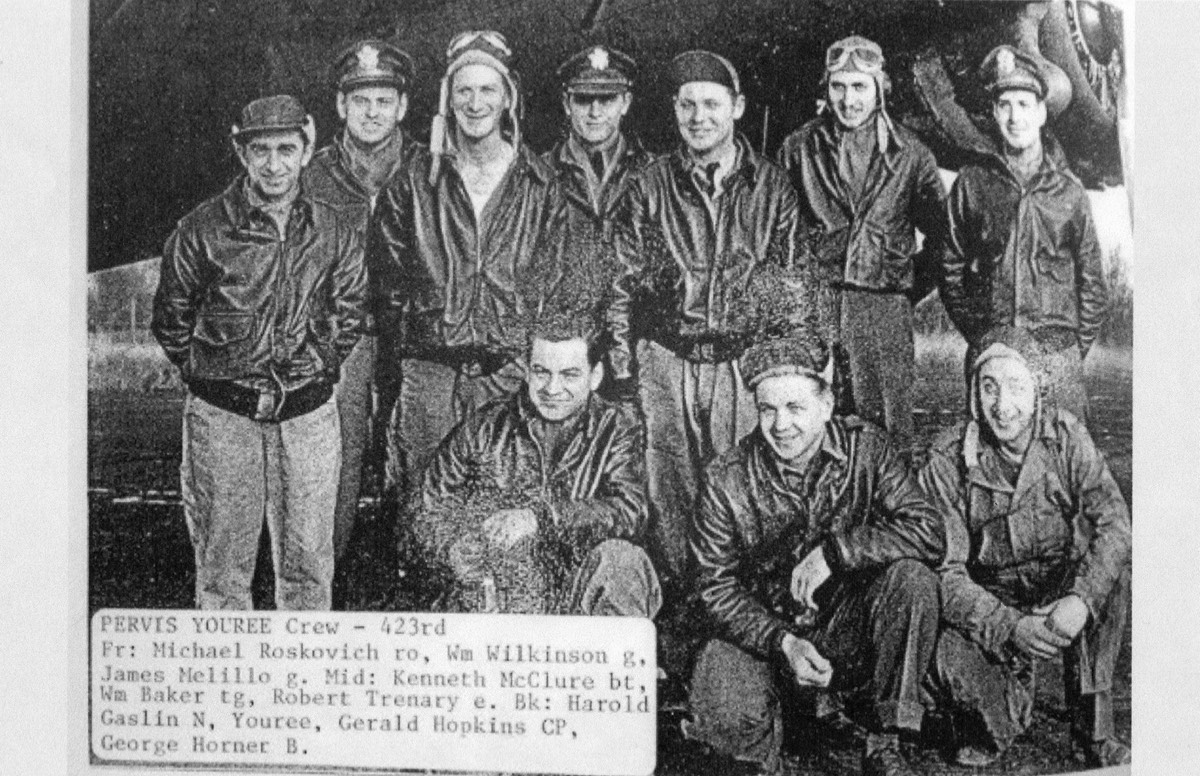
Captain Purvis Youree's crew with Michael Roskovich kneeling on the left front row.
[Used under Common Licence from the American Air Museum]
Little is known about most of the American crew since they hadn't yet had the time to fly on many operations. More, however, is known about Michael Roskovich, nicknamed the 'Mad Russian' thanks to his ancestry and to his endless pranks. His favourite trick was to cut off the tie of any officer who flew aboard his plane and hang them up as trophies! His story is better known, partly because he was well liked by his contemporaries but largely because he was the first man in the USA's 8th Air Force, to complete a twenty-five mission combat tour. He had flown most of his operations as part of Captain Purvis E. Youree's crew and, operating as a gunner, had shot down two FW190s. Upon completion of his tour, on 20th December 1943, Roskovich would have been eligible for a return to the States where his operational experience and expertise would have been used to train rookie crews. Instead, he chose to remain with his squadron, was promoted from Technical Sergeant to 2nd Lieutenant and made Gunnery Officer. He apparently found this too boring and volunteered for further operations. He had completed a further eight missions by the time of his visit to Drem.
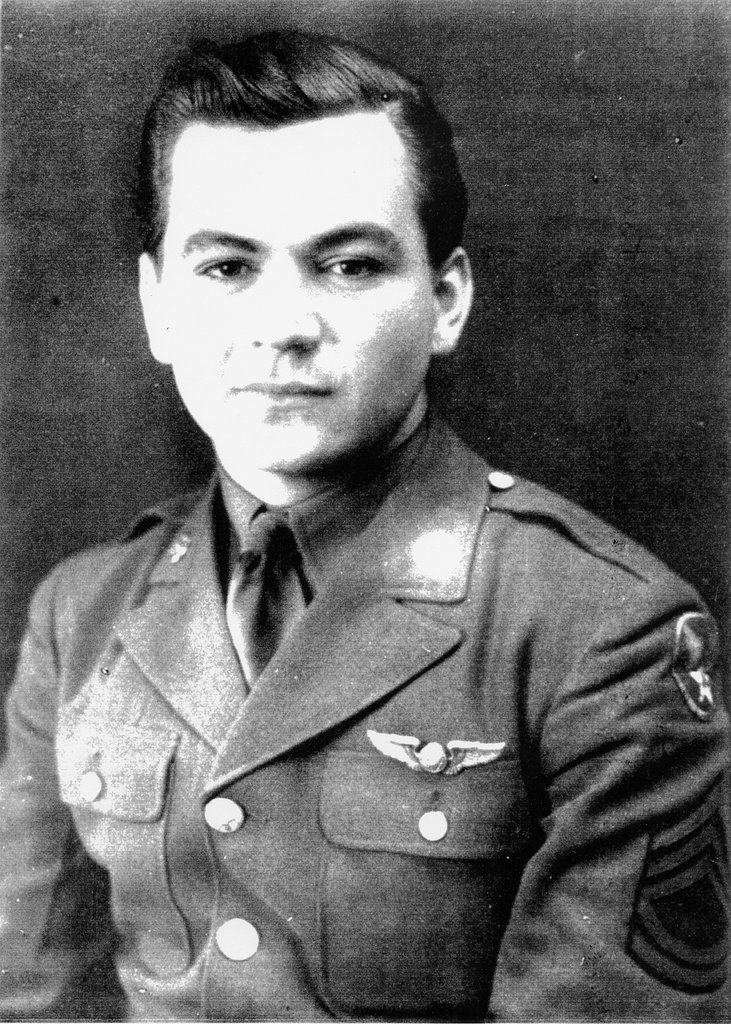
2nd Lt Michael Roskovich, DFC, AM/3, OLC, PH
[Courtesy of Bill Rarity.]

Roskovich's famous tie collection
[Courtesy of Mark Fussell, Chairman of the 306th Bomb Group Museum, Thurleigh]
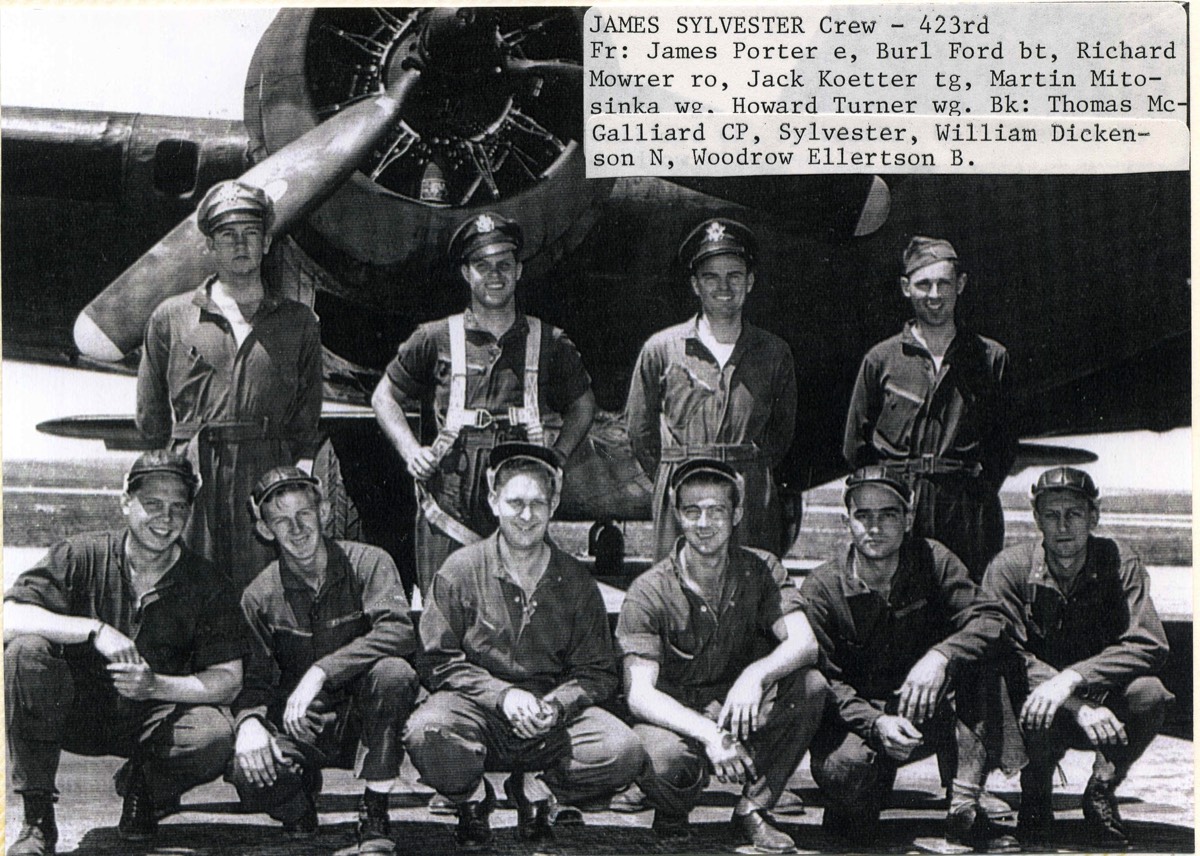
This picture shows another of the Drem crash crew, Woodrow Ellertson, Bombardier, standing back right with his normal crew.
[Picture courtesy of Mark Fussell, Chairman of the 306th Bomb Group Museum, Thurleigh]
Drem airfield was a grass strip used by fighters not bombers. It's pure speculation but In the winter of '43-44 the ground may well have been 'sticky', a potential factor in the crash of the B-17. Available accounts, however, state the weather was cold, near freezing but clear. All boarded the aircraft and Moseley started the engines in the usual sequence. One resolutely refused to fire up and the crew faced a frustrating delay to uncover the reason. No doubt after some discussion with the rest of the crew, Moseley opted to attempt a take off in the hope that the airstream would 'wind' the engine into life.
Sadly, this didn't happen and once off the ground a wing dipped sufficiently to hit one of the protective walls built to safeguard the base's fighters. The aircraft then crashed into a field just beyond the airfield's boundary and was quickly engulfed in flames. All aboard perished.
We know that:
Michael Roskovich and Edward O'Malley are buried and commemorated in the Cambridge American cemetery.
Woodrow Ellertson is buried and/or commemorated in Payson City Cemetery, Payson, Utah.
The final resting place of Arthur Moseley is presently unknown.
Wilfrid Rowe is buried in Dirleton cemetery, East Lothian.
Edward Hodgkins is buried in Rushden cemetery.
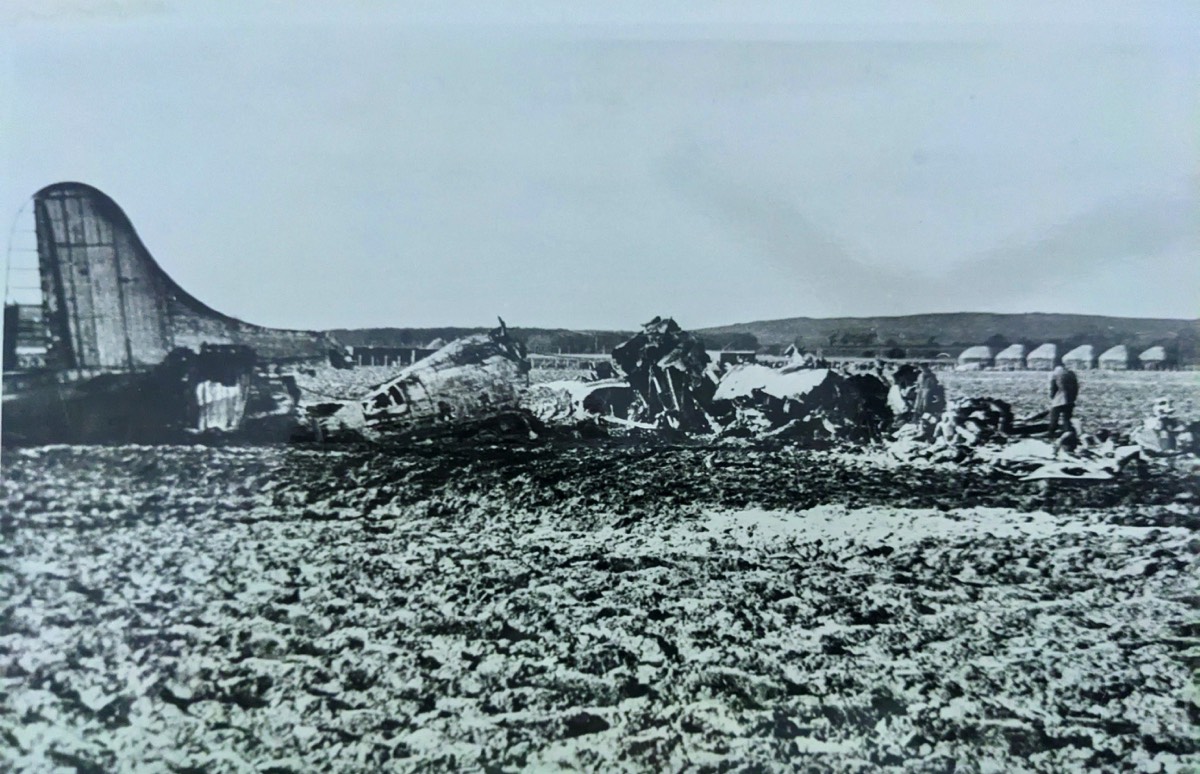
The burnt out wreckage of the B-17
[Courtesy of Chuck Roskovich]

Edward O'Malley's commemorative cross, Cambridge American Cemetery
(Courtesy of Mike Challis and Bill Rarity)

Michael Roskovich's commemorative cross, Cambridge American Cemetery
(Courtesy of Mike Challis and Bill Rarity)
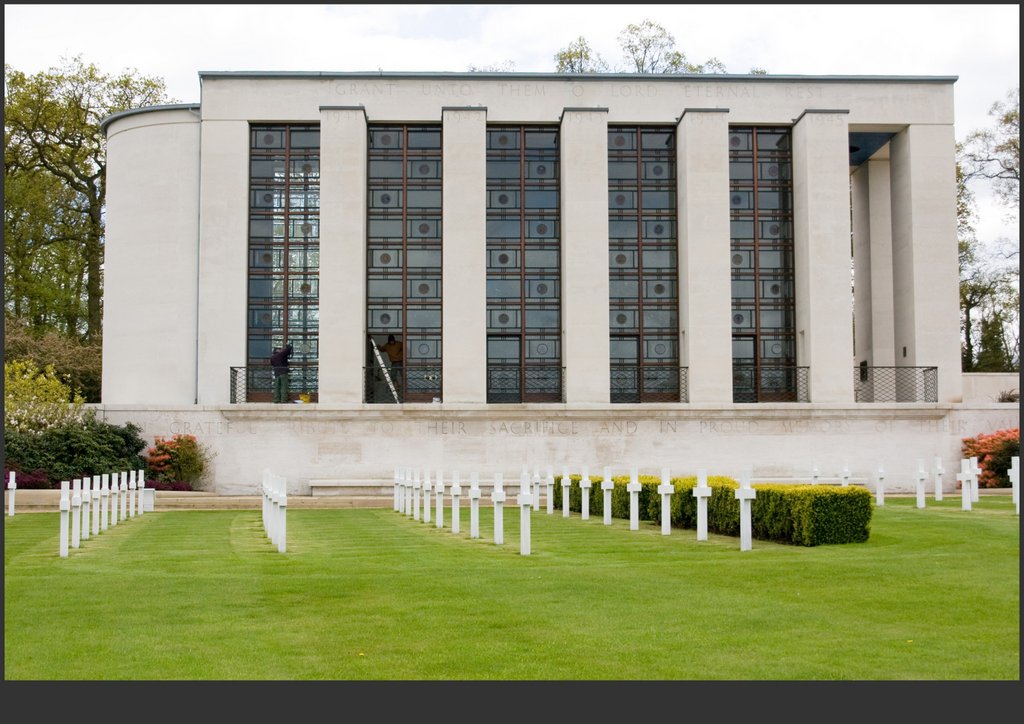
General view of part of the Cambridge American Cemetery
(Courtesy of Mike Challis and Bill Rarity)
306th Echoes article, January 1998
The article contains some chilling detail about what the USAF post-crash procedures entailed as well as further details about Michael Roskovich.


The article from the 306th Echoes magazine.
[Courtesy of Mark Fussell, Chairman of the 306th Bomb Group Museum, Thurleigh]
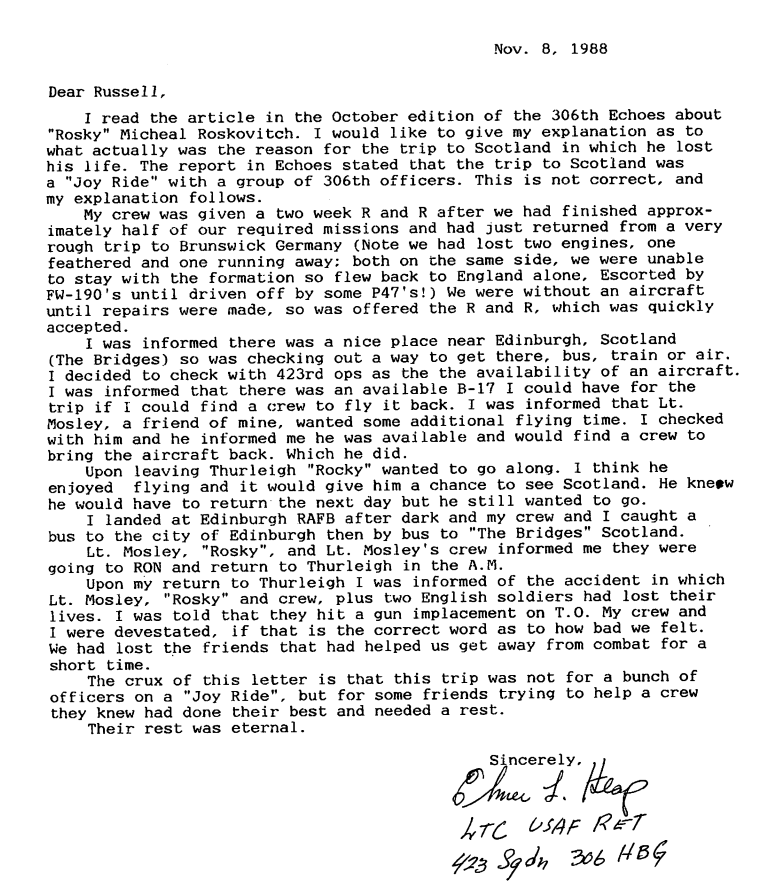
Letter written by Elmer Heap discounting any imputation that the crew had simply gone north on some kind of 'Joy ride'.
[Courtesy of Mark Fussell, Chairman of the 306th Bomb Squadron Museum, Thurleigh]

